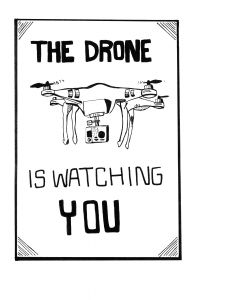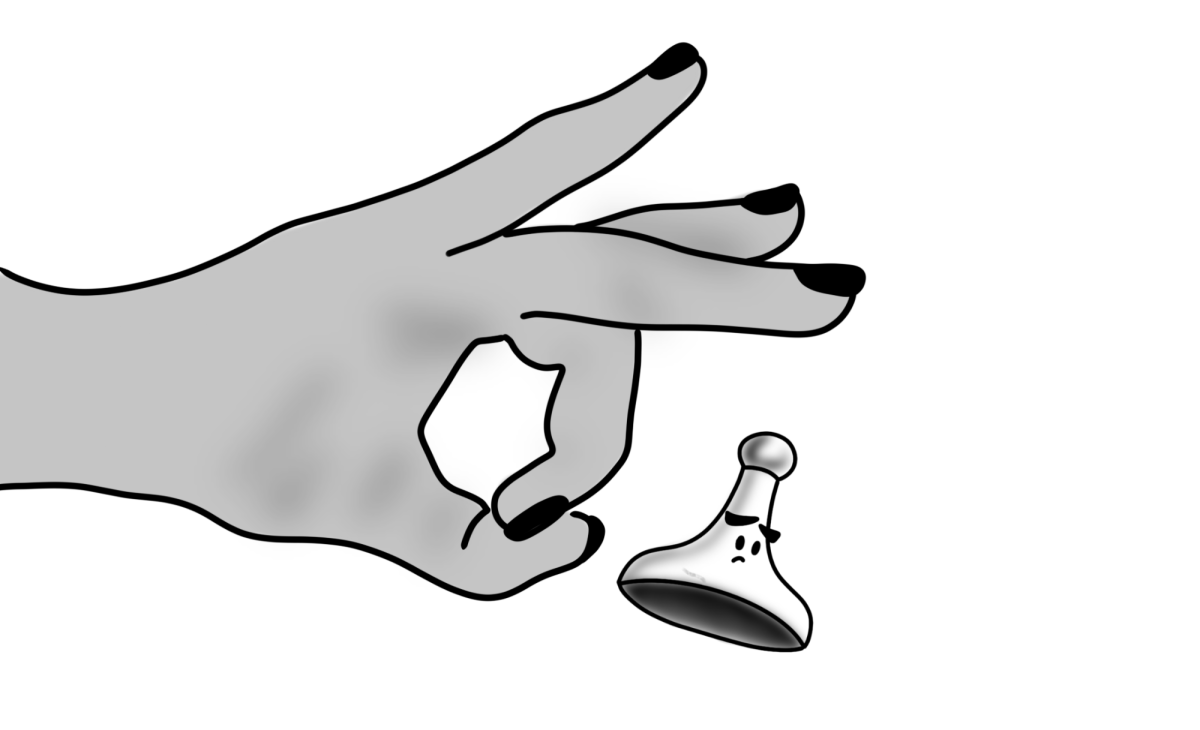A few weeks ago, my friend Jack decided it was high time to order the DJI Phantom 2 Vision Quadcopter. We had spent the past few months watching Internet video after Internet video of bird’s-eye cityscapes and mountain-traversing helicopter sweeps, all the while obsessing over the idea of finally being able to take our cinematography skills to the skies. When the time had come for Jack to sell his BMX bike, we both knew what his first investment would be.
For those not well-versed in cinematography jargon, the Phantom is essentially an RC helicopter that has the capability to carry a GoPro camera on its underside and send live video feed to a monitor. With an asking price of around $899 and a vertical range of 2,000 feet, the drone quite literally soars above its competitors in the aerial footage market, and has become the most popular consumer-ready drone on the market.
Yes, you read correctly. Consumer. Ready. Drone.
The Phantom came a few days after Jack submitted the order online. Its box design was reminiscent of a new Apple product, with a cropped picture of the copter over a black background on the front and snippets of short, powerful quotes encrusting the box’s interior. “The Future of Possible. The Power of Flight.”

The thing was amazing. So amazing, in fact, that our entire third period film class was put on hold so that the students might watch the first flight of the Phantom. So amazing that, during our second flight, a woman came out from the administration office and asked to take a photo of us and the drone for the school’s Twitter page.
It was hard to put into words, but this unique piece of technology provoked a profound infatuation within people that they had never experienced before. I felt it. Jack felt it. The 16 kids in our film class felt it. There was something magical about the drone, something incredible about taking our line of sight into the clouds so that we might see as gods. There seemed no limit to the capabilities of the Phantom.
The other day, as we sat outside during break, a previous teacher of ours wandered by. Spying the drone in my hands, he stopped for a moment to question us about its use. We relayed stories of how we’d taken it to 900 feet the previous week and how the Phantom had used GPS technology to return to its launch spot; of how, during lunch, we’d almost ground up an overly-friendly seagull with the machine’s powerful propellers.
After a bit, our teacher paused, then gestured to the thing with his forefinger in an almost-scolding manner.
“Brave New World,” was all he said before moving on his way. Us being two teenage boys, we laughed the incident off as though it were simply another boring teacher spewing his dull knowledge on Aldous Huxley’s famed dystopian novel.
Over the next week, we flew the thing through the goalposts on the school football field and even chased a friend in the school parking lot. As a test for a future project, I animated a graphic over the footage to make it seem as though the drone were an intelligent android. There was, it seemed, no end to the fun.
Always in the back of my mind, though, were the words of my teacher. They were with me when I switched on the GoPro camera, when I watched the drone take flight; when, in reviewing the footage afterwards, I could recognize the faces of dozens of people I knew and recited their names aloud.
What had seemed a modern miracle of technology slowly started to become something else in my eyes. I began to notice things about the drone that I hadn’t ever seen before: the fact that its white color made it blend into the sky on an overcast day, or that the noise its propellers made when activated sounded like a giant, menacing insect.
While researching the GPS capabilities of the Phantom, I came across an article on CNN in which Brandon Bryant, a former “Drone Warrior,” was interviewed. In gruesome detail, the interview describes Bryant’s struggles with memories of horrid visuals of dismembered humans and destroyed towns on his computer monitor following each strike. Each day, Bryant is forced to reconcile with the fact that, no matter how far away he may have been, his control of the drone led to catastrophic destruction and, ultimately, the murders of countless human beings.
Now, I’m aware my paranoia could lead me to some fairly ridiculous conclusions here. The idea that a commercialized war drone will ever be released to the public is entirely illogical. I’d be hard pressed to believe DJI’s next slogan would be: “The Future of Massacre. The Power of Fright.”
Yet I should like to think my fears lie in a zone of complete rationale. Who’s to say that the Department of Homeland Security won’t start using drones as a way of “preserving societal peace”, having them fly the same routes 24/7 to make sure a sense of order is maintained throughout the country?
“How silly,” you may contest. But I would remind you of Amazon Prime, the shipping giant’s new plan for air drone delivery slated to take effect in 2015. While this program is designated solely to delivering goods to consumers, each drone is to be equipped with a camera that will assist in maneuvering and allow each drone to reach a customer without damage to property or humans. Yes, these cameras take video.
And yes, the FAA is currently working on a series of regulations for unmanned aerial vehicles. However, the introduction to the section on privacy states as such: “the FAA’s mission does not include developing or enforcing policies pertaining to privacy or civil liberties.” Never before has the FAA been asked to safeguard these rights, simply because it has never had cause.
The point remains that drones are an entirely new technology, one that, amidst a hectic creation of laws and regulations, is being administered to consumers. Jack is the rightful proprietor of his DJI Phantom 2 Vision Quadcopter, and while he and I have enjoyed our time using it, we know absolutely nothing about the true capabilities of the incredible piece of technology we hold in our hands. I’m sure he’ll continue to use the drone whenever he pleases; however, I figure I’ll stave off my usage for a while until a few more laws are in order. Until then, I don’t think I want a Brave New World.






